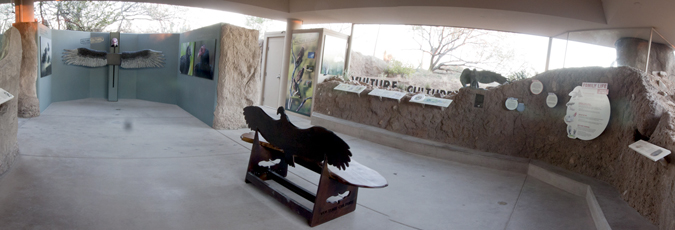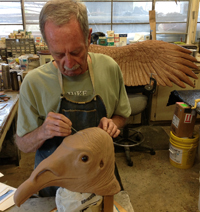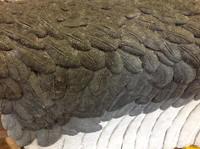
Vulture Culture
This entertaining exhibit humorously displays intriguing facts about this oft-misunderstood bird. Keep an eye out for the exhibit’s committee* of turkey and black vultures as they silently study your movements.
(*A group of vultures is called a committee, volt, or venue.)
The world would be a great deal less sanitary and more foul-smelling without vultures. As nature’s sanitation engineers, these birds are vitally important to the ecosystem. Vultures are considered an “indicator species” because they exist at the end of the food chain. Thus, scientists are able to study vultures and monitor the health of the environment. The Sonoran Desert region is home to two species of vultures: the turkey vulture and the black vulture.
Track vultures and other raptors in real-time, courtesy of Hawk Mountain Sanctuary
Black vultures (Coragyps atratus)
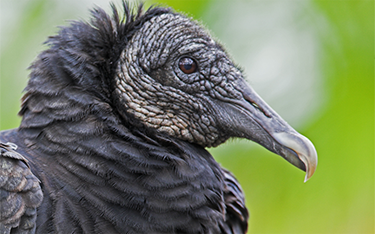
Black Vultures might be considered rather handsome, for vultures. They have sooty black plumage, featherless black heads, and white stars under their wingtips. These birds are particularly fascinating because they have a very complex social structure. They exhibit strong family loyalty and mate for life.
In the U.S. they are more commonly found in the Southeast and are more rare in the Southwest. Arizona is one of the few places they are still found. Their range includes areas from Mexico through most of South America.
- Spanish: Zopilote Negro
- First reported in Arizona in the 1920s.
- No sense of smell
- 5+ foot wingspan
- Long-legged
- Feeds mostly on carrion and pushes its head into carcass to feed
- Eats quickly, gulping down food
- Aggressive when feeding
- Non-migratory in southwest
- Very content on the ground
- Excellent daytime vision
- Usually seen in flocks
- Population: Increasing
Turkey vultures (Cathartes aura)
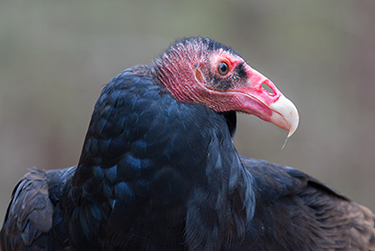
Turkey Vultures are the most commonly-found vulture in North America. In many parts of the country they are sometimes erroneously called “buzzards” (The common buzzard (Buteo buteo) is a medium-to-large bird of prey, whose range covers most of Europe and extends into Asia.) When seen on the ground at a distance, they resemble wild turkeys. They are unique among vultures in that they have a keen sense of smell and locate carrion by sight as well as odor. Because of this, other vultures will follow them to kill sites.
Polytypic (4 ssp.). Length 27" (69 cm); wingspan 69" (175 cm).
- Spanish: Aura Gallipavo
- Less social than Black vultures, may see single individuals foraging
- Plant itself over carcass and eat slowly; real clean-up crew
- Use body posture to communicate
- Migratory
- More numerous than black vultures in the US
- Can smell food up to a mile away
- Excellent daytime vision
- Population: Stable
